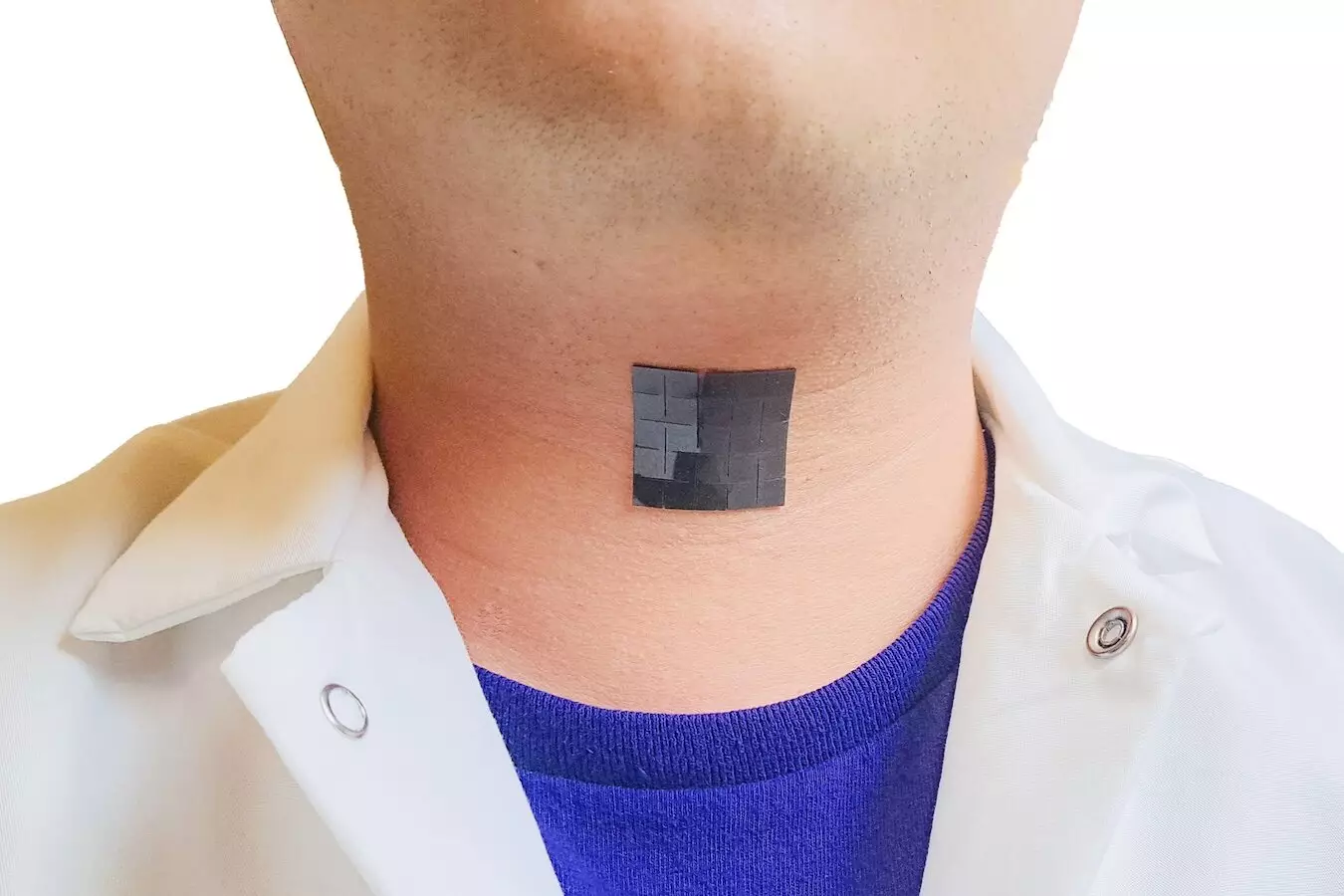Voice disorders can greatly impact a person’s ability to communicate effectively. This can be due to various conditions such as pathological vocal cord issues or recovering from laryngeal cancer surgeries. However, there is hope on the horizon thanks to a team of engineers at UCLA who have developed an innovative device to help individuals with dysfunctional vocal cords regain their voice.
The newly invented bioelectric system, created by Jun Chen and his team, is a revolutionary advancement in the field. This soft, thin, stretchy device can be attached to the skin outside the throat, measuring just over 1 square inch. By detecting movement in a person’s larynx muscles, the device can translate these signals into audible speech with an impressive 95% accuracy rate.
The device is comprised of two main components – a sensing component and an actuation component. The sensing component detects and converts muscle movement signals into electrical signals, which are then translated into speech signals using machine-learning technology. The actuation component then turns these signals into the desired voice expression.
The device utilizes a unique magnetoelastic sensing mechanism to detect changes in the magnetic field caused by the movement of laryngeal muscles. This mechanism, developed by Chen’s team, involves layers of biocompatible silicone compound and magnetic induction coils. The device is lightweight, measuring 1.2 inches on each side and just 0.06 inches thick, making it easy to adhere to an individual’s throat near the vocal cords.
Voice disorders affect people of all ages and backgrounds, with nearly 30% of individuals experiencing a speech disorder in their lifetime. Traditional therapeutic approaches can be time-consuming and invasive, with recovery periods ranging from three months to a year. The new voice restoring device offers a non-invasive, wearable solution that can assist patients in communicating both before and after treatment for voice disorders.
In experiments conducted by the researchers, the wearable technology showed an impressive accuracy rate of 94.68% in translating laryngeal muscle movements into speech signals. The team plans to further expand the device’s vocabulary through machine learning and test it on individuals with speech disorders. The research team, including graduate students from Chen’s lab, is dedicated to advancing this technology to help those in need.
The invention of this voice restoring device by UCLA engineers represents a significant step forward in assisting individuals with voice disorders. Through innovative technology and a collaborative research effort, the device has the potential to transform the lives of those struggling to communicate due to vocal cord issues. As advancements continue to be made in this field, the future looks bright for individuals seeking to restore their voice and enhance their quality of life.


Leave a Reply